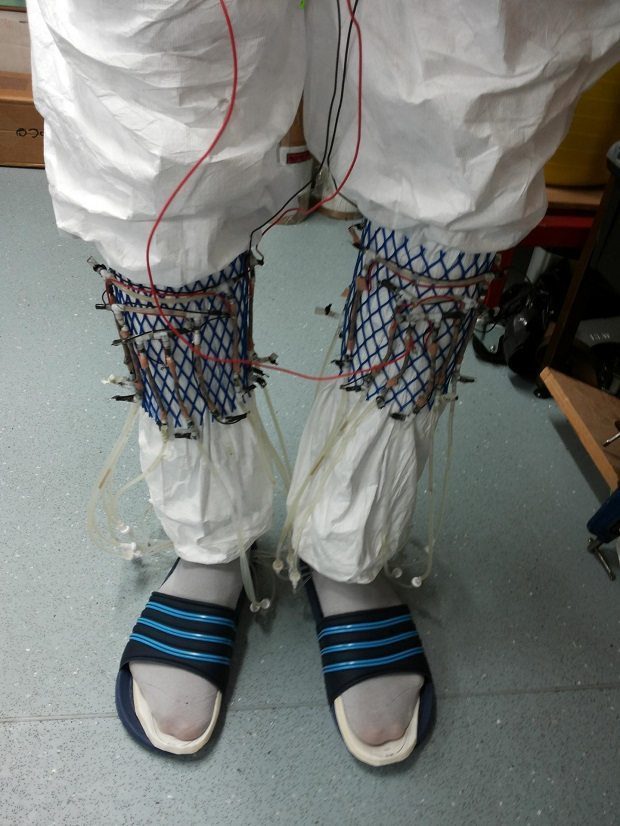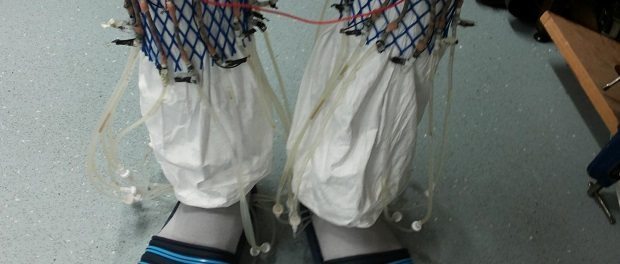[dropcap style=”font-size:100px; color:#992211;”]W[/dropcap]hilst the rest of you have been doing less creative things with your urine: flushing it down the loo, using it to feed your hydroponics, chucking bottles of it at gig photographers
…these guys have been using theirs to electrify their socks.
A pair of socks embedded with miniaturised microbial fuel cells (MFCs) and fuelled with urine pumped by the wearer’s footsteps has powered a wireless transmitter to send a signal to a PC. This is the first self-sufficient system powered by a wearable energy generator based on microbial fuel cell technology.
The scientific paper, ‘Self-sufficient Wireless Transmitter Powered by Foot-pumped Urine Operating Wearable MFC’ is published in Bioinspiration and Biomimetics.
The paper describes a lab-based experiment led by Professor Ioannis Ieropoulos, of the Bristol BioEnergy Centre at the University of the West of England (UWE Bristol). The Bristol BioEnergy Centre is based in Bristol Robotics Laboratory, a collaborative partnership between the University of the West of England (UWE Bristol) and the University of Bristol.
Soft MFCs embedded within a pair of socks was supplied with fresh urine, circulated by the human operator walking. Normally, continuous-flow MFCs would rely on a mains powered pump to circulate the urine over the microbial fuel cells, but this experiment relied solely on human activity. The manual pump was based on a simple fish circulatory system and the action of walking caused the urine to pass over the MFCs and generate energy. Soft tubes, placed under the heels, ensured frequent fluid push-pull by walking. The wearable MFC system successfully ran a wireless transmission board, which was able to send a message every two minutes to the PC-controlled receiver module.
Professor Ieropoulos says, “Having already powered a mobile phone with MFCs using urine as fuel, we wanted to see if we could replicate this success in wearable technology. We also wanted the system to be entirely self-sufficient, running only on human power – using urine as fuel and the action of the foot as the pump.”
“This work opens up possibilities of using waste for powering portable and wearable electronics. For example, recent research shows it should be possible to develop a system based on wearable MFC technology to transmit a person’s coordinates in an emergency situation. At the same time this would indicate proof of life since the device will only work if the operator’s urine fuels the MFCs.”
Microbial fuel cells (MFCs) use bacteria to generate electricity from waste fluids. They tap into the biochemical energy used for microbial growth and convert it directly into electricity. This technology can use any form of organic waste and turn it into useful energy without relying on fossil fuels, making this a valuable green technology.
The Centre has recently launched a prototype urinal in partnership with Oxfam that uses pee-power technology to light cubicles in refugee camps.
Source: Eurekalert/Institute of Physics
Image: UWE Bristol / Ioannis Ieropoulos

Some of the news that we find inspiring, diverting, wrong or so very right.




















